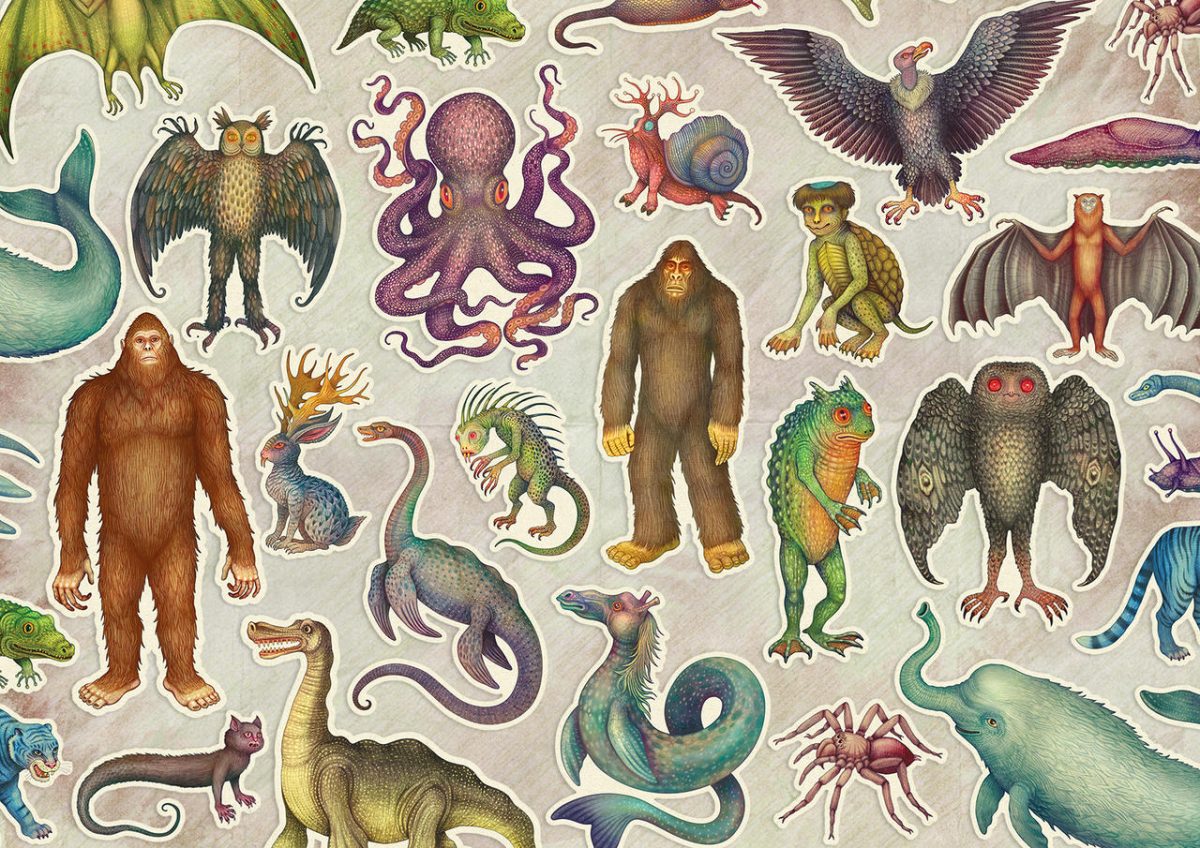Students across the country are abundantly familiar with a variety of sciences offered in the public school system. Biology, chemistry, and physics are among the many fields of study regarding our natural world. While a wide array of sciences continue to grow and prosper, one field certainly doesn’t receive the recognition it rightfully deserves: Cryptozoology.
Cryptozoology is the study of creatures whose existence is widely disputed. Cryptozoologists observe phenomena such as Bigfoot or the Loch Ness Monster. Such creatures have become known as cryptids.
It should be noted that all cryptids must be scientifically possible, based on our current knowledge of biology. For example, the yeti, a large snow ape in the mountains of Asia, can be considered a cryptid as scientifically, a species of large primates adapted to cold climates has been noted before. Similarly, a more far-fetched creature, like the ever popular Mothman, can be thought of as a cryptid because, while no bipedal flying insects have been discovered, such a creature’s existence would not be impossible.
Additionally, lore surrounding cryptids, such as Bigfoot helping lost hikers or Mothman serving as a harbinger of disaster, are not accepted as fact but rather enjoyable stories to facilitate publicity. Comparisons include black cats being regarded as omens of bad fortune and ladybugs giving one good luck. We know that both animals exist despite their rumored, fictional powers.
Meanwhile, myths such as dragons or unicorns are not considered cryptids because their fantastical powers prevent any scientific backing. Additionally, creatures exclusive to folklore or religion (such as the three-headed hound, Cerberus, of Greek lore), are also not cryptids.
While cryptozoology has often been seen as a pseudoscience due to its distinct lack of evidence, some merit persists as the field endures through the age of modern science.
For instance, the Norse legend of the Kraken has haunted sailors for centuries. The rumor of a gargantuan squid grappling with the largest beasts of the sea shook the nautical world. Over time, the legend of the Kraken faded to irrelevance as scientific evidence took the place of unsupported myth.
But perhaps the giant squid’s story was discarded too soon.
In 1925, the remains of an enormous cephalopod were discovered in the stomach of a large sperm whale. The massive intrigue reawakened the legend of the Kraken and sent the scientific community into a frenzy of disbelief. Just like the tales of the mammoth squid, this new creature fought with whales and possessed larger than life tentacles. Dubbed the colossal squid, this discovered creature proved that while often exaggerated, the story of a Kraken-like creature prowling the dark depths of the sea was no longer a fairy tale, but a reality.
The study of cryptids may also lead to new conservation measures. Take the story of the Chupacabra, for example. The Chupacabra, literally translated as “goat-sucker,” is a creature supposedly native to Puerto Rico and Mexico. While its appearance has taken many creative liberties, from reptilian humanoid to vampiric kangaroo, the Chupacabra has been most commonly understood as a bluish gray dog with snarling fangs and patchy fur. The Chupacabra gained popularity by attacking livestock farms in Texas during the early 2000s, causing a stir among farmers. Unlike many cryptids, these carnivorous canines have ample photographic evidence.
While it was easy to dehumanize the Chupacabra as a vile beast, many civilians and rangers alike chose to look deeper into the phenomenon. By capturing a small number of live Chupacabra specimens, scientists discovered that the mysterious and highly dangerous monsters were actually just mange-infested mammals. As it turns out, the Texan Chupacabra are a variety of sickly animals and not just a singular species. Hairless dogs (such as Mexico’s Xoloitzcuintlis), coyotes, and even raccoons have fallen victim to a mange epidemic in the southern United States. By investigating the Chupacabra rumors, many animals with the debilitating skin conditions received life saving aid.

Similarly, the Jackelope, a cryptid described as an antlered rabbit in the western US, was also discovered to be struggling. Although not a new species, Jackalopes were discovered to be rabbits suffering from the “Shope Papilloma” virus, a disease that creates horn-like protrusions from an animal’s body. The discovery allowed scientists to not only help the rabbits but also understand the mysterious illness better.
The Kraken, Chupacabra, and Jackelope are not the only creatures that have benefitted from cryptozoological studies. In fact, a multitude of species may eventually be helped through the work of cryptozoologists. By studying the animals that may or may not truly exist, the door to discovery opens. In a world struggling from a sharp decline of biodiversity, striving to discover the oddities of nature could lead to potential discoveries and push for more public passion and support toward wildlife conservation.
Cryptozoology’s original advances can be traced to the discovery of dinosaurs. Before 1824, dinosaurs and their fossils were a make-believe concept akin to that of urban legends or mythical beasts. However, when a fractured skeleton of megalosaurus was discovered in England, the legends of gargantuan reptiles prowling the primordial earth soon became a frightening reality. Dinosaurs and similar prehistoric creatures have given scientists an astonishingly clear picture of ancient Earth, reshaping humanity’s idea of prehistory. If the queries of early cryptozoologists were never explored, a massive piece of the prehistoric puzzle would have never been discovered.
Although a biological field at its core, cryptozoology consists of a distinct concoction of studies. Philosophy, psychology, history, and world cultures all play an enormous role in forming cryptozoology’s foundation.
Cryptozoology does not simply involve attempting to prove or disprove cryptid existence. Instead, it involves learning how such legends were formed, what climates sustain abnormal organisms, why people believe in phenomena, and what humans must do should the beasts of fable be found. Cryptozoology is ultimately a study of natural ethics, environmental comprehension, behavioral biology, and uncovering the vast unknown of planet earth.
By educating the public on cryptozoological studies, zoology advances into a realm of theory and intrigue never seen before. The merging of fiction and fact into a conglomeration of fascinating mysteries regarding the natural world spreads awareness to many fauna phenomena that were originally discounted as worthless rumors or folktales.
Even if cryptozoology never makes it past the realm of pseudoscience and into the general public, its influence on pop culture, tradition, and scientific intrigue remains unquestioned. Cryptozoology forces humanity to seek the unknown, question our very system of life, and explore the vastness of our strange and beautiful world. Embracing the enigma of cryptozoology leads to a harmonious future with life’s greatest mysteries.



